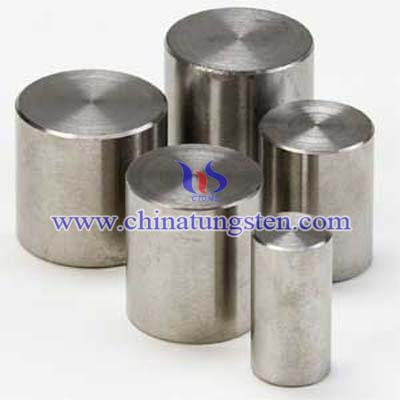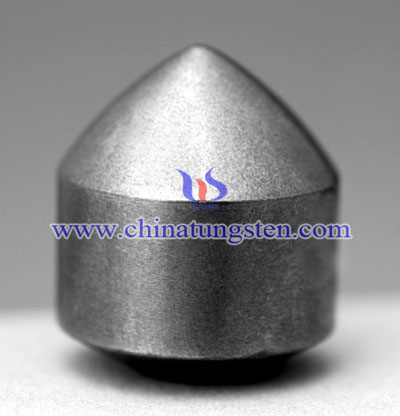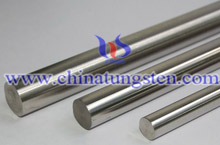
Tungsten, also known as Wolfram, lapis ponderosas or heavy stone, has highest melting point of all elements except carbon - sources in scientific literature vary between 3387°C and 3422°C. Tungsten heavy alloy also has also excellent high temperature mechanical properties and the lowest expansion coefficient of all metals. A temperature of about 5700°C is needed to bring tungsten to boil which corresponds approximately to the temperature of the sun's surface. With a density of 19.25 g/cm3, tungsten is also among the heaviest metals. Its electrical conductivity at 0°C is about 28% of that of silver which itself has the highest conductivity of all metals.

The metal is known as tungsten in some countries and as wolfram in others, including Sweden, the country of origin of the name tungsten. The chemical symbol W, which is universally used to denote tungsten, suggests that wolfram was formerly the more generally accepted name for the element. In Britain, the mineral wolframite is also known as wolfram.
Since 1912, Tungsten heavy alloy (the element or, perhaps, an uncle) has been widely used to make the most essential part of any light bulb–the filament. Bumpers have tungsten heavy alloy with tungsten content of 3000 to 6000 one hundred watt light bulbs, depending on model and configuration.
During World War II, tungsten played a significant role in background political dealings. Portugal, as the main European source of the element, was put under pressure from both sides, because of its deposits of wolframite ore at Panasqueira. Tungsten's resistance to high temperatures and its strengthening of alloys made it an important raw material for the arms industry.
 Tungsten metal ( pure tungsten), or the unalloyed elemental form of tungsten is used mainly in electrical application, for example, most notably in incandescent tungsten light bulb filaments, X-ray tubes.
Tungsten metal ( pure tungsten), or the unalloyed elemental form of tungsten is used mainly in electrical application, for example, most notably in incandescent tungsten light bulb filaments, X-ray tubes.
As a high performance materials, tungsten heavy alloy, pure tungsten has high melting temperature, high density, low vapor pressure, low thermal expansion combined with good thermal conductivity, sufficient electrical resistance and modulus of elasticity
Tungsten heavy alloy, pure tungsten products are widely used for Furnace parts, Semiconductor Base Plates, Components for Electron Tubes, Emission Cathodes for Electron Beam Evaporation, Cathodes and Anodes for Ion Implantation, Tubes / Boats for Sintering of Capacitors, Targets for X-ray Diagnostics, Crucibles, Heating Elements, X-ray Radiation Shielding, Sputtering Targets, and Electrodes.
Tungsten heavy metal carbide (WC) is an inorganic chemical compound (specifically, a carbide) containing equal parts of tungsten and carbon atoms. Colloquially, tungsten heavy metal carbide is often simply called carbide. In its most  basic form, it is a fine gray powder, but it can be pressed and formed into shapes for use in industrial machinery, tools, abrasives, as well as jewelry.
basic form, it is a fine gray powder, but it can be pressed and formed into shapes for use in industrial machinery, tools, abrasives, as well as jewelry.
Tungsten heavy metal carbide, also called cemented carbide, has become a popular material in the bridal jewelry industry due to its extreme hardness and high resistance to scratching. While the material's hardness contributes to its scratch resistance, this trait translates into low ductility (a type of plasticity) which results in a material that is brittle. This can be improved using a cobalt or nickel binder. Using nickel as the binder also makes the ceramic extremely resistant to corrosion from acids or seawater.
The metal tungsten, whose name is derived from Swedish - Tung (heavy) and stem (stone), is mainly used in the form of cemented tungsten carbides,. Cemented carbides or hard metals as they are often dubbed are a class of materials made by 'cementing' grains of tungsten carbide in a binder matrix of the metal cobalt by a process called liquid phase sintering.
Today tungsten carbide grains sizes vary from 0.5 microns to more than 5 micron with a cobalt content that can go up to around 30% by weight. In addition, adding other carbides can also vary the final properties.
The result is a class of materials that are characterized by High strength Toughness High hardness
Please do not hesitate to contact us if you have any question about tungsten heavy metal. Our e-mail address is sales@chinatungsten.com sales@xiamentungsten.com. Or you can call us on 0086 592 5129595/5129696/5127878.